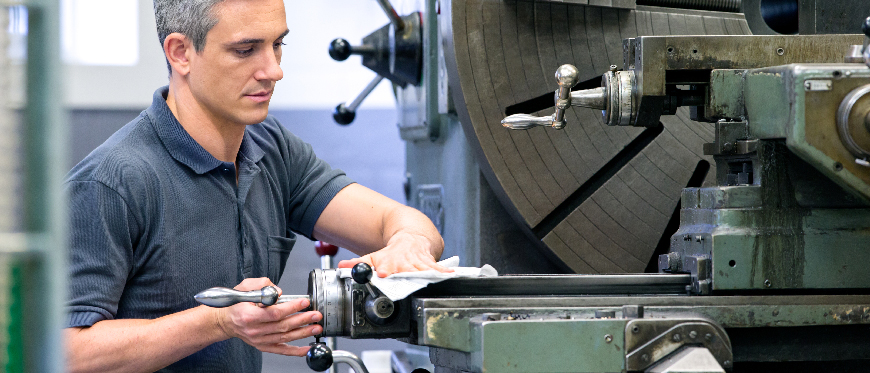Managers may not always think of the words “manufacturing” and “hygiene” in the same sentence – but management experts at leading institutions like Harvard and The George Washington University certainly do. In fact, they and other leading thinkers and practitioners are helping shape the discipline known as industrial hygiene.
This is a field that extends well beyond the common definition of hygiene as “keeping clean.”
One report from the Harvard School of Medicine notes that, to meet goals of comprehensively improving health and safety (and to achieve the productivity and profitability benefits that follow), manufacturers need to develop programs that manage and optimize a wide range of factors, including ergonomics, noise, temperature, indoor air quality, chemical exposure, radiation, and biological hazards.
Three keys to effective industrial hygiene
Developing and implementing such programs requires the involvement of top management, interdepartmental cooperation, and what for many organizations will be new, specialized expertise – witness the rise of the Certified Industrial Hygienist (CHI). In an optimal situation, the CHI is integrated into all aspects of production planning and monitoring. While the list of concerns they address may seem daunting, it can be helpful to look at them through three clarifying lenses:
One: A culture of cleanliness
From a standpoint of comprehensive industrial hygiene, it’s useful to frame your plans in terms of people, workspaces and products.
Your people need, at minimum, basic hygiene – clean hands, for starters – to stay well, stay on the job and be productive (and it’s surprising how little handwashing gets accomplished without specific encouragement and reminders and plenty of available supplies, like hand sanitizer). Workspaces need to be kept clean, free of hazardous spills to avoid slip-and-fall accidents. And your choice of products needs to be carefully made, to avoid exacerbating the health and safety issues you’re trying to prevent (such as using cloth shop rags, which can both fail to adequately clean spills and continue to pose a toxic-waste hazard as they linger at the worksite, waiting to be cleaned).
Two: Investment in employee well-being
Employees also need less obvious support: ergonomic tools and equipment to avoid injury; ample light to improve both mood and function; adequate ventilation and specialized filters to prevent inhalation of toxins.
Those efforts toward preventing injury represent a good start on well-being, but promoting health requires additional imagination. One audio-visual manufacturer created its own “wellness park” featuring a running track, workout stations, volleyball court, and competitive “health challenges.” These creative efforts toward fitness, stress reduction and, often, nutrition, can require a significant investment – but one with an excellent return. A recent study found that companies with formal wellness programs see significant drops in absenteeism and medical costs, among other benefits, yielding an average 6-to-1 return on investment.
Three: Planning for safety before accidents happen
The George Washington University, is another leading institution promoting the value of investing in industrial hygiene. One of its professors advised in a recent article that manufacturers “…find and fix workplace hazards before workers are hurt.” He recommends using Safety and Health Management Systems, noting that a systematic, organization-wide approach, constantly monitored and adjusted based on experience, is crucial to reducing the nearly one billion dollars that American manufacturers spend daily on workers compensation.
He also advises manufacturers to welcome inspectors from the Occupational Health and Safety Administration (OHSA) with open arms and look at them as “cheap consultants.” After all, on average, workers compensation claims fall 9% following an OHSA inspection.
You don’t have go to an elite university in Cambridge, MA or Washington, DC to see the benefits of embracing industrial hygiene. You do need to begin a program, watch how it works on your shop floor, continually improve it – and then watch your bottom line improve continually, too.
Sources:
Harvard School of Health: Industrial Hygiene Keeping Workers Healthy and Safe
Harvard Business Review: 7 Ways to Improve Operations without Sacrificing Worker Safety
Workdesign: Wellness Programs for a Healthy Workplace
Boss Magazine: The Benefits of a Wellness Program in the Manufacturing Sector
